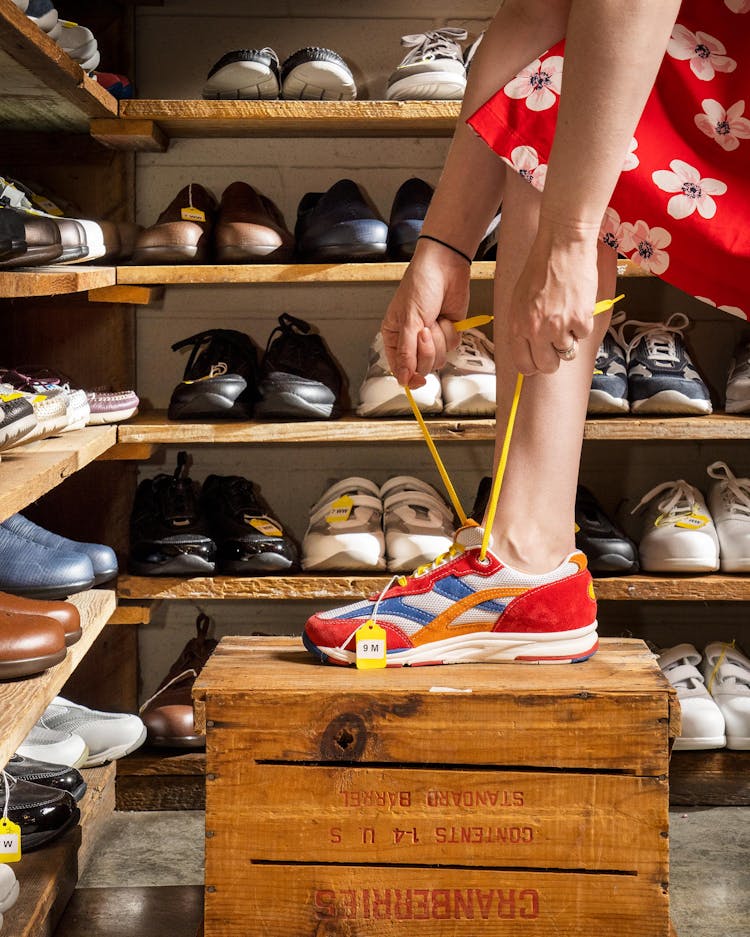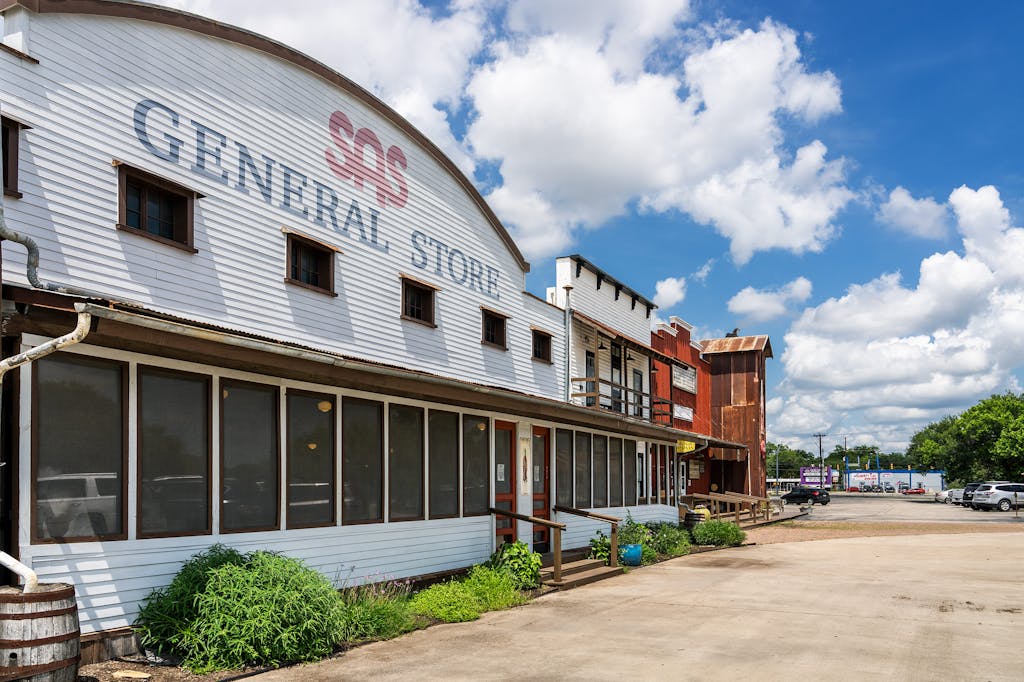Because my grandmother Rosemary was born during the Great Depression, she thought it was ridiculous to spend money on new, fancy clothing when she could stop by a thrift shop and pay $5 for a used, perfectly lovely floral blouse to wear to bunco night. When I was a teenager, we scavenged for vintage finds together and spent countless hours driving around San Antonio in her Chevy Malibu visiting the city’s secondhand stores, even showing up right when they opened to grab the latest arrivals.
Granny made a few brand-name exceptions to her bargain-hunting and resale gospel: matte-pink Clinique eyeshadow, for instance, and Chico’s silky black tank tops. These splurges, she said, were worth the extra money because of the quality. But our shared sense of style—I built my vintage wardrobe from our treasure hunts—stopped at one of her other indulgences: orthopedic flats from San Antonio Shoemakers, a.k.a. SAS. The local company’s slip-ons, sneakers, and sandals may have offered the extra support that my granny needed, but they were, to put it bluntly, ugly, with thick soles, broad straps, and unflattering shapes; the colors were the dullest creams and browns. Because they’re handcrafted, they’re not cheap, with prices starting around $100. Even if I could afford them, there was no way a teenager could get away with wearing something like that. During my freshman year at the University of Texas at Austin, my friends called me “Grandma” because I spent so much time with the eighty-and-older crowd when I was back in San Antonio (I even once took a water aerobics class with my grandmother). I didn’t need to give them any more encouragement.
Then, during the summer after my sophomore year, Granny grew impatient one day as she waited for me to find my Vans so that we could go to H-E-B. “Use my SAS shoes,” she demanded. I quickly slipped on an old pair of her cross-strap sandals that had been sitting in her closet for years. As we walked around the grocery store, I felt like I was floating. I didn’t know footwear could feel so good. Maybe these shoes didn’t look that ancient? For the rest of that summer, I wore those sandals as well as a pair of her SAS sneakers. By the time I headed back to school, I was a convert. I confidently returned to campus with three pairs of my grandma’s old shoes in tow (my friends, used to my quirky fashion sense, took it in stride, so to speak).


Today, as a twentysomething professional, I own a pair of SAS’s Medicare-approved white mesh Tempo lace-up sneakers, which were absolutely worth the $199 I paid for them. I wear them because they’re practical and comfortable, sure, but also because they make me feel connected with my grandma, who passed away two years ago at the age of 87. And owning them made me, for the first time in my life, something of a trendsetter. In the past year or so, I’ve seen hip college students at coffee shops near campus in Austin walking around in “grandma” shoes, some sporting that small, telltale SAS brown-and-gold tag on the side.
The sartorial world, it turns out, has embraced “ugly fashion” and the shoes that go with it, from “dad sandals” by Chanel to Balenciaga’s five-toe rubber sock. The Wall Street Journal noted recently that SAS and similar shoes are the new choice for millennials and Gen Zers. Nancy Richardson, the CEO of SAS, told me that as many people started working from home during the pandemic and began ditching their high heels and work shoes, they realized what I had long ago in H-E-B. “Once people have worn a really comfortable shoe, it’s hard to walk away from that,” she said, perhaps intending the pun.

SAS was founded in 1976 in San Antonio by two friends, Terry Armstrong and Lew Hayden, who used soft, high-quality leather for their handmade shoes for men and women. They tapped into the city’s long tradition of crafting quality leather goods, from boots to saddles. The company is now owned by the Armstrong family; Terry Armstrong’s two daughters are still involved. SAS has a factory on the south side of the city and one about 145 miles west, in Del Rio, making it one of the few holdouts that still manufacture shoes in the United States, rather than, say, Vietnam or Indonesia. The brand is found in more than two hundred SAS stores and retailers around the world, including in Mexico, Australia, and Chile.
The company’s local roots run deep. Some San Antonio families have been working at SAS for generations. D. J. Bubar, the director of manufacturing operations, has been an employee for nearly forty years; his father worked there for about three decades. When Bubar started in the eighties, SAS produced a handful of styles and colors. The company’s offerings have since ballooned, featuring everything from boots and work shoes to handbags. To help appeal to more consumers, SAS recently brought on a team of new designers. “They are bringing ideas that maybe we have to be a little more open to, some of us old-timers,” Bubar said.
Now, in addition to its traditional, clunkier models, SAS offers kitten heels and snake-print ankle boots; there’s even the limited Oasis Collection of yellow sneakers and sandals, inspired by the West Texas hipster paradise of Marfa. Like all trends, this one will surely pass. But when it does, I’ll continue to walk—comfortably, of course—in Granny’s footsteps.
- More About:
- Style & Design
- San Antonio









